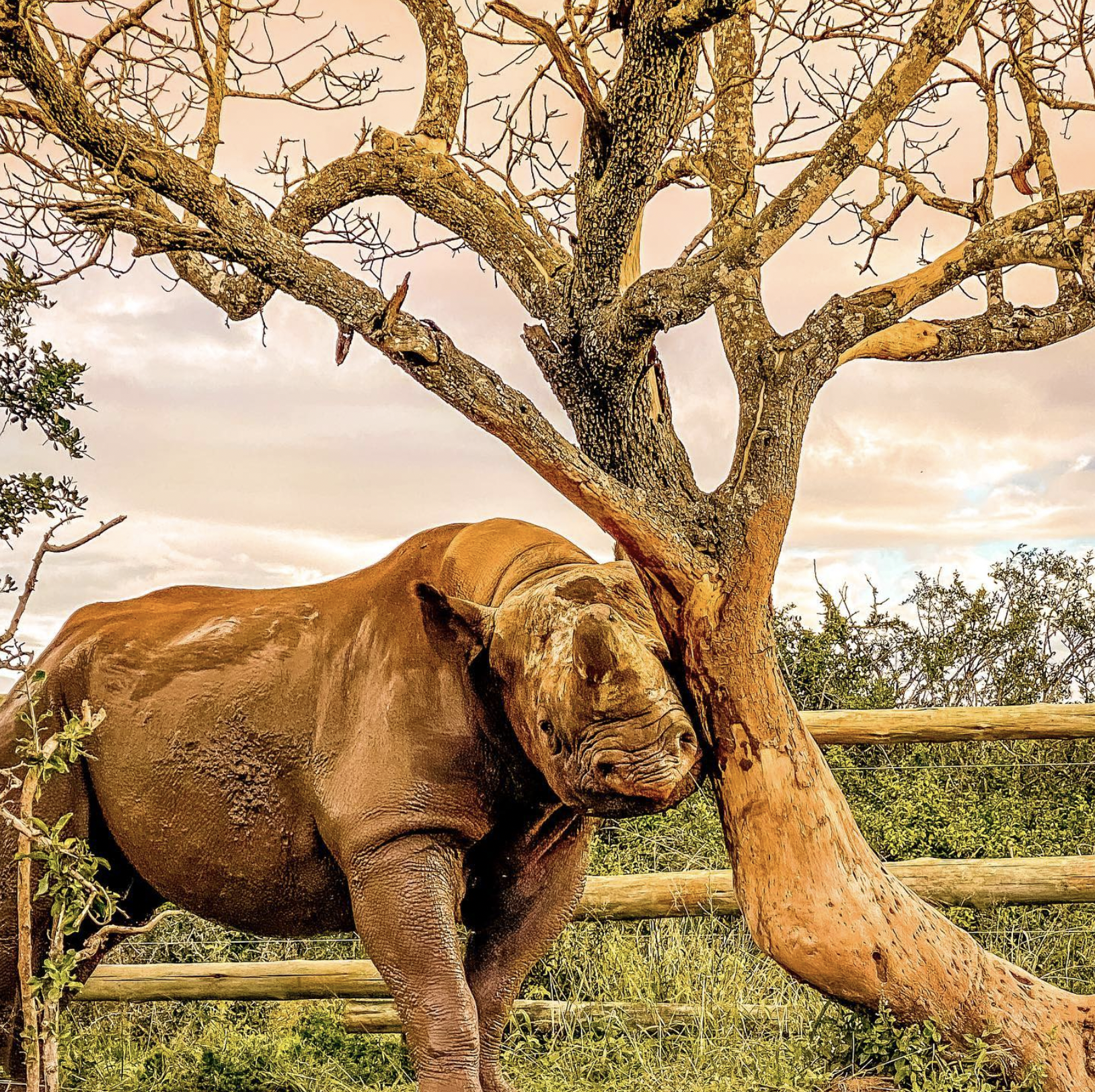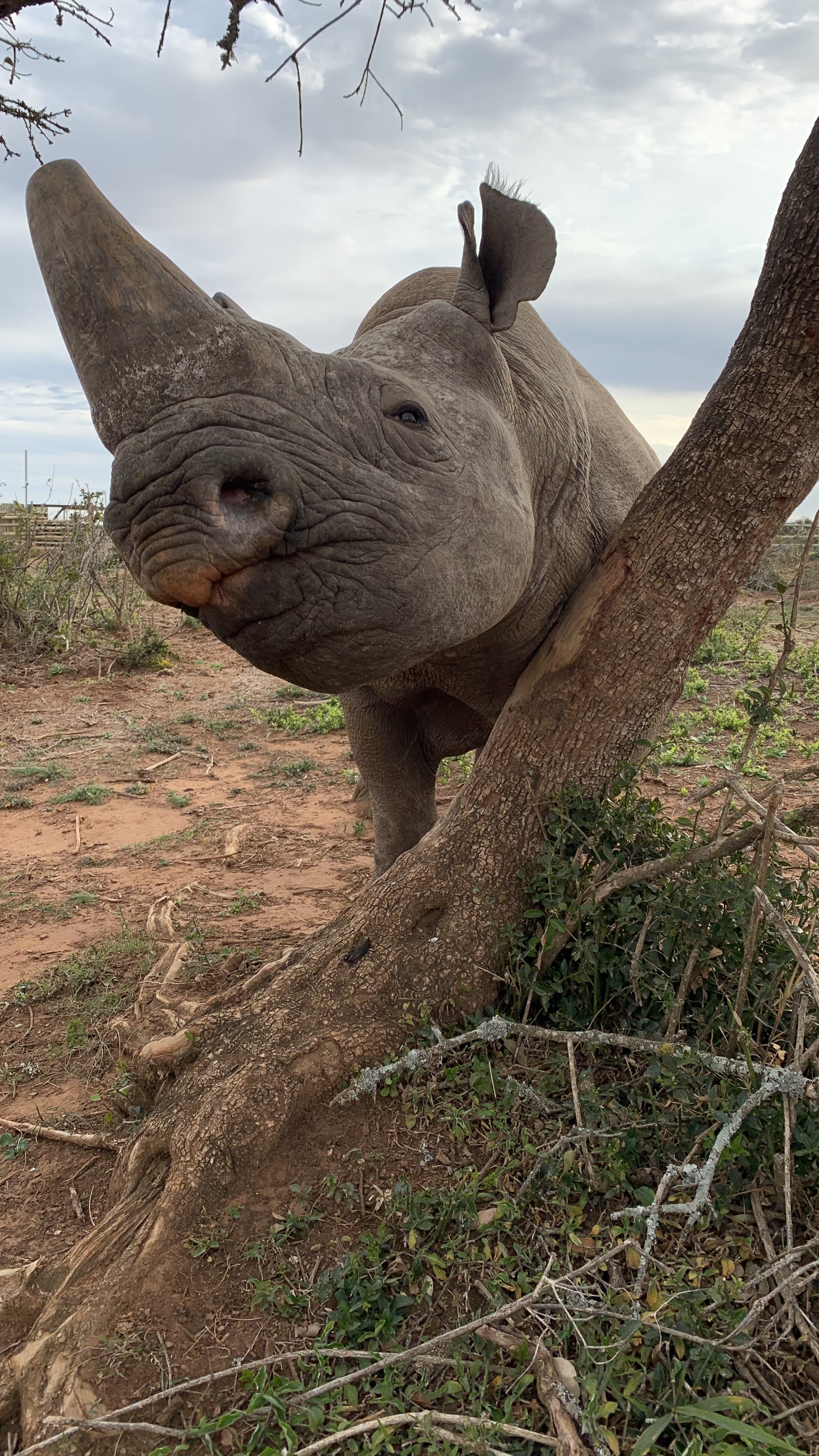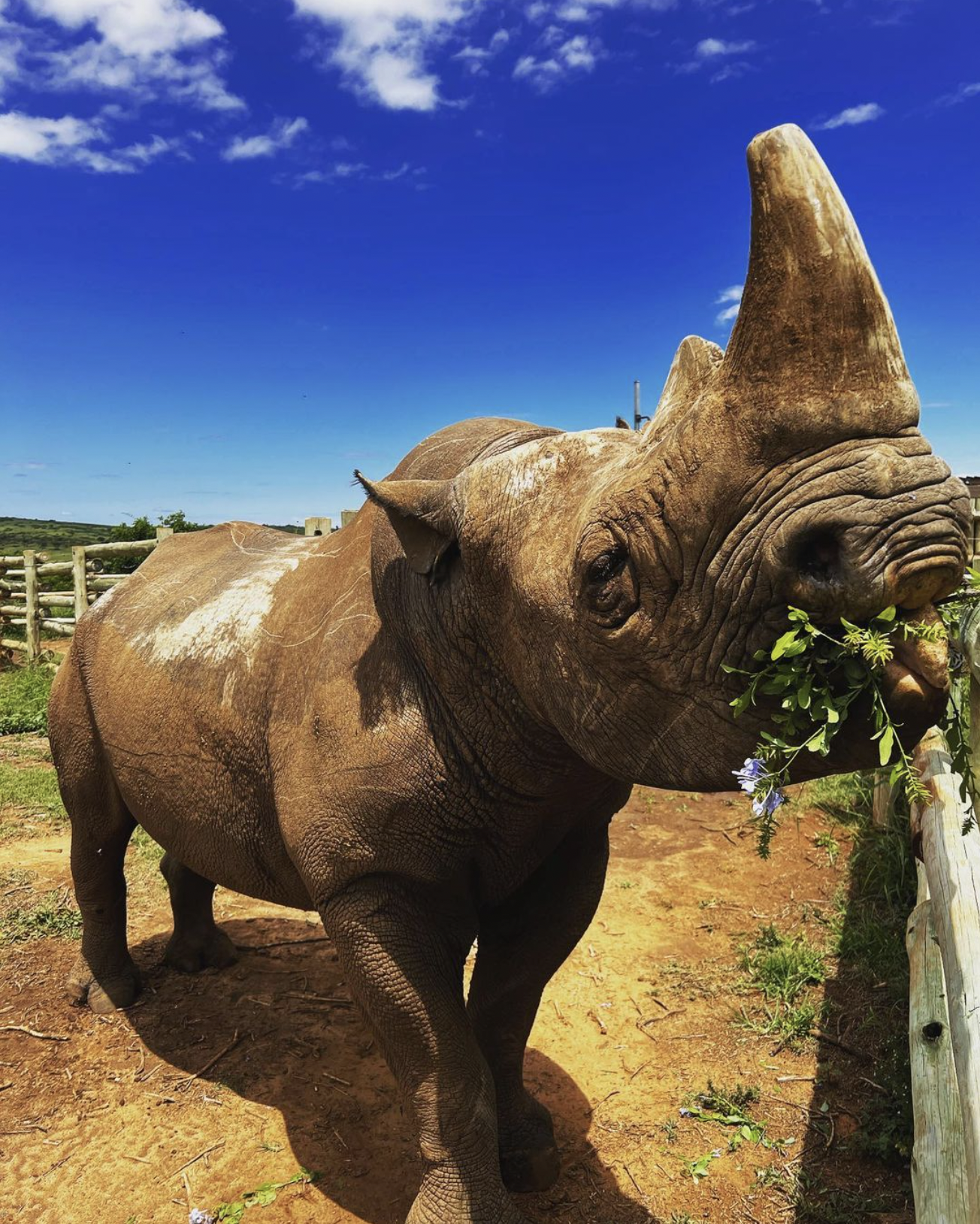A rare black rhino sighting is a beacon of hope for the future of the endangered species of mammal.
A conservationist living in South Africa, Brett Barlow, explained how the rhino, now named Munu, was initially found.

Munu, a blind black rhino bull. Provided photo
How was Munu originally identified?
Munu was spotted by SANParks rangers, walking in circles, and [they] darted to see what the issue was. He was found to be totally blind and suffered from two detached retinas, probably from prolonged fighting with other males.

White Lion Foundation crew members have nursed Munu back to health. Provided photo
What are the main threats facing this specific rhino species?
A rhino's only real predator is Man, apart from the very young and very old. But there is a need for increased genetic diversity and I believe this is also a very real threat. Currently, there are less than 300 of his subspecies in SA and a limited, but larger number in Namibia (numbers are not available, but am told low).

Munu scratches his "scratching" post after taking a mud bath. Provided photo
How long do you expect Munu to live, and how will he contribute to the continuation of this rare species?
Munu will probably live another 20-25 years. He will add to genetic diversity if we bred as we should be able to get a Namibian bloodline cow, this will allow us to perhaps share a “cleaner" bloodline back into SANParks and beyond.
Barlow is praised in a bio on him from The White Lion Foundation.
“Brett is at the forefront of developing artificial intelligence technologies to aid in the humane conservation of wildlife and their environments" the bio reads.

Munu enjoys a cloudy day. Provided photo
How long do you expect Munu to live, and how will he contribute to the continuation of this rare species?
Munu will probably live another 20-25 years. He will add to genetic diversity if we breed as we should be able to get a Namibian bloodline cow, this will allow us to perhaps share a “cleaner" bloodline back into SANParks and beyond.

Munu enjoys a snack. Provided photo
Is poaching still a threat, even in Munu’s current situation?
Poaching is a huge problem, we have 24-hour armed guards around Munu as he is essentially defenseless. We also received a donation from FLIR, who provided a full thermal camera solution. The Shannon Elizabeth Foundation is a major partner and contributor to Munu, providing a vehicle, staffing and operational support as well as building a new Boma at the new property.

Munu will hopefully add to genetic diversity in years to come. Provided photo
Tell us about the White Lion Foundation, and the various types of work that are done by the organization.
We were doing work with AI and snow leopards as well as turtle rescue, more can be done discussed. Due to time constraints and other commitments, I resigned from the WLF in order to concentrate with work with the SEF
